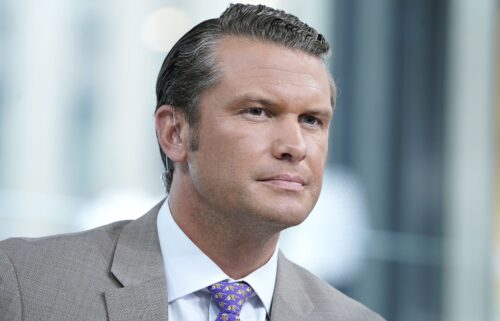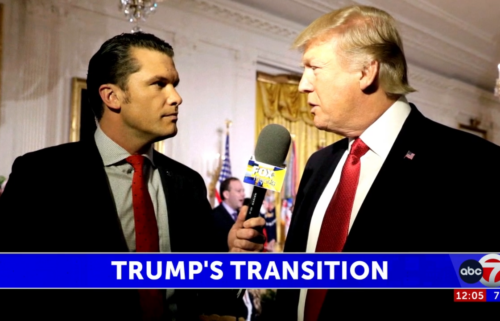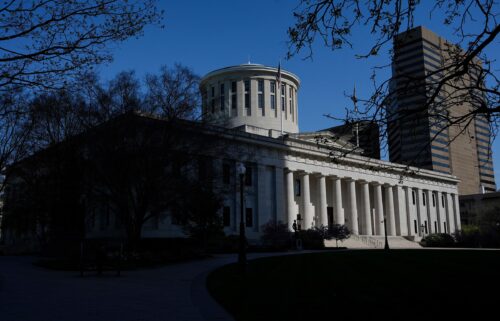Trump is about to give Putin another gift

Another critical legacy of the post-Cold War era may be on the verge of biting the dust now that President Donald Trump’s administration is planning to withdraw from the Treaty on Open Skies, which allows member states to conduct unarmed surveillance over one another’s territories and helps verify arms control agreements. Watching Trump drive a stake through the heart of this treaty should be quite a pleasant prospect for Russian President Vladimir Putin.
Though President Dwight Eisenhower first proposed such a treaty in 1955, it did not become a reality until 2002. Since then, the Open Skies Treaty has allowed reconnaissance flights over each of the 34 nations that have signed it — largely NATO nations and others across eastern Europe. This arrangement has allowed American surveillance aircraft to keep track of just what the Russian military is up to in areas like eastern Ukraine, or in Georgia, where Russian troops once tried in vain to seize large swaths of territory.
An American withdrawal from the Open Skies treaty would give Putin more leeway to make forays into areas like eastern Ukraine, where he’d love to keep his actions concealed from western scrutiny. As Rep. Eliot Engel of New York, Chair of the House Committee on Foreign Affairs, wrote in a letter to National Security Adviser Robert O’Brien, “Withdrawal risks dividing the transatlantic alliance and would further undermine America’s reliability as a stable and predictable partner when it comes to European security.”
By withdrawing from the Open Skies treaty, the United States would fulfill Putin’s goals by effectively “driving another wedge into the NATO alliance,” Reif says. President Barack Obama’s deputy national security advisor Ben Rhodes may have put it best in a recent tweet: “Sometimes the only way to explain/predict Trump’s foreign policy is to think ‘what would Putin want the US to do?'”
Each time Donald Trump has withdrawn from an international treaty, I’ve declared it his single most cataclysmic move. And each time, he has surprised me by topping his previous actions. He certainly surprised me with the audacity of his decision in 2017 to withdraw the United States from the Paris climate agreement, and with his utter failure to understand what the consequences would be. Trump followed this move in 2018 by withdrawing from the Iran nuclear accord, to similarly disastrous consequences. Then there was Trump’s withdrawal from the INF (intermediate nuclear forces) agreement this August, touching off what will inevitably be a new arms race, and certainly freeing up Russia’s ability to test and deploy new generations of advanced missiles threatening America’s allies in western Europe.
Now, the administration is threatening to withdraw from the Treaty on Open Skies.
“The view within DOD and the State Department is that there continues to be significant value here to the United States and to our allies and partners” in maintaining the treaty, Kingston Reif, director for Disarmament and Threat Reduction Policy at the Arms Control Association, tells me in an interview.
With this treaty in force, Reif says, “The United States has been able to fly over Ukraine and western Russia. These flights have yielded valuable data with respect to the Russian military.” Moreover, since Ukraine is also a signatory to the pact, its military has benefited from intelligence gleaned from these overflights, Reif tells me.
The Open Skies treaty allowed one particularly important flight over eastern Ukraine on December 6, 2018, after Russians attacked Ukrainian naval vessels in the Black Sea. The flight, which included American, Canadian, French, German, Romanian, British and Ukrainian observers on board the OC-135 surveillance plane, “reaffirm(ed) (the) United States’ commitment to Ukraine and other partner nations,” a Defense Department statement said. While the United States does have other sources of satellite surveillance, this particular flight was crucial: It produced images that could be broadly released because they were obtained from this less-classified source. Our ability to make and disseminate these images demonstrated to Russia that the world was watching.
The treaty has also allowed surveillance flights over the heavily armed Russian enclave of Kaliningrad, where the Kremlin has been upgrading its nuclear weapons storage and deployment. These flights have been particularly useful to the Baltic members of NATO, including neighboring Lithuania, where advanced Russian systems pose an immediate and ever-present threat.
To get a sense of the shock and horror Trump’s withdrawal has elicited from America’s strategic establishment, look no further than the United States Strategic Command’s (Stratcom) Twitter account. It quietly asserted its support for the Open Skies Treaty by retweeting Rep. Don Bacon of Nebraska, who wrote that the agreement “helps build confidence & increase transparency.”
It remains unclear why the Trump administration is looking to pull out of the treaty after 17 years. The administration has declined to comment to CNN, or to me, on the cause or the timing of the withdrawal.
Regardless, the treaty offers several critical functions. It supports our NATO allies while providing a security blanket over non-NATO members who are also interested in containing Russian expansion. It also offers us a window into Russia’s military operations, especially those along its borders.
Above all, Trump should start to consider the consequences of his impulsive actions — demonstrated recently and vividly in his ill-conceived decision to withdraw US forces from northeastern Syria, thereby giving Turkey and Russia an open avenue to occupy swaths of territory that they’d long been denied.
While the consequences of a pullout from Open Skies may be less visible in the short term than those of the US withdrawal from Syria, on the long term, they could prove equally catastrophic.




